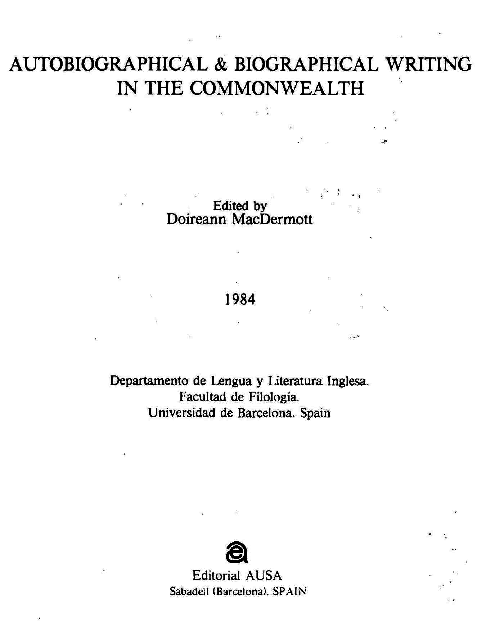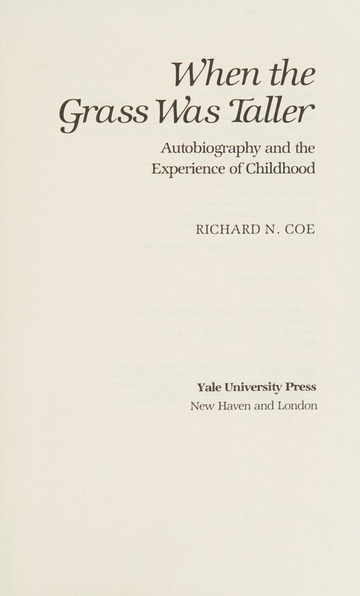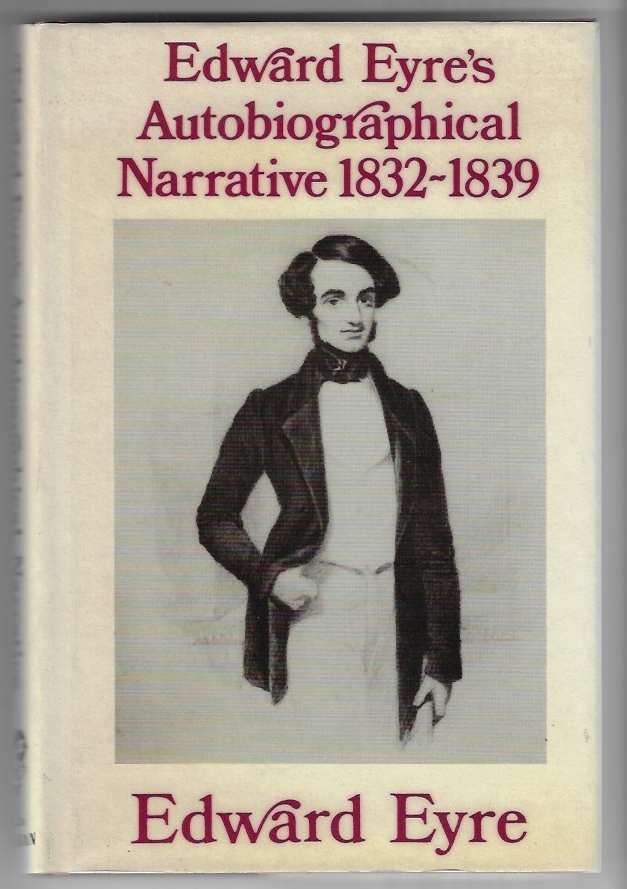- Free Article: No
- Contents Category: Biography
- Custom Article Title: Autobiographical Acts
- Review Article: Yes
- Article Title: Autobiographical Acts
- Article Subtitle: The history of the private ‘I’
- Online Only: No
- Custom Highlight Text:
Roy Pascal was the major pioneer of the modem study of autobiography in the English language, in his book Design and Truth in Autobiography (1960). This was primarily a literary history, and was of particular value because of Pascal’s wide knowledge of continental European literature and criticism. Pascal’s volume was absorbed relatively slowly, and the critical study of autobiography in English only ‘took off’ in the 1970s and 1980s, with books like Karl Weintraub’s The Value of the Individual: Self and Circumstance in Autobiography ( 1978), and W. C. Spengemann’s The Forms of Autobiography (1980). James Olney’s selection of various papers in Autobiography: Essays Theoretical and Critical (1980) is a useful guide to the state of autobiography studies today.
- Book 1 Title: Autobiographical & Biographical Writing In The Commonwealth
- Book 1 Subtitle: Proceedings Of The Eaclals Conference, Sitges 1984
- Book 1 Biblio: Departamento de Lengua y Literatura lnglesa, Facultad de Filologia, Universidad de Barcelona, Spain, 259 pp, $21.50 pb
- Book 1 Cover Small (400 x 600):

- Book 1 Cover (800 x 1200):

- Book 2 Title: When The Grass Was Taller
- Book 2 Subtitle: Autobiography and the experience of childhood
- Book 2 Biblio: Yale University Press, 331 pp, $54.95 pb
- Book 2 Cover Small (400 x 600):

- Book 2 Cover (800 x 1200):

- Book 3 Title: Edward Eyre's Autobiographical Narrative 1832-1839
- Book 3 Biblio: Caliban Books, 230 pp, $32. 95 pb
- Book 3 Cover Small (400 x 600):

- Book 3 Cover (800 x 1200):

Reading forty-one papers delivered at any academic conference would normally be reserved for a desert island, when every other literary source was exhausted. It is a pleasant surprise then to find that the conference papers edited by Doireann MacDermott under the title Autobiographical and Biographical Writing in the Commonwealth are a stimulating and at times exciting collection of short essays on a wide range of Commonwealth authors and autobiographical modes. The diversity of this volume is its strength. It establishes a wide-ranging, essentially comparative perspective for the reader. Autobiography is taken out of a narrow literary framework and made central to the comparative exploration of different cultures and their histories.
Australian subjects and scholars featured prominently among the 220 participants from twenty-six countries who attended the triennial conference of the European Association of Commonwealth Literature and Language Studies held in Spain in April 1984. Eleven of the papers in this collection are concerned with aspects of Australian autobiography and biography, from Jimmie Barker to Albert Facey, from Ned Kelly to David Malouf and the ‘autobiographical impulse’ in Australian novels. Veronica Brady raises the autobiographical stakes with her sharp comment that ‘If autobiography is a game for one’s life, in Australia it can be a desperate game. Introspection becomes urgent rather than idle because in a harsh world it represents the only source of value’ (p.42). John Colmer’s paper on Hal Porter’s The Watcher on the Cast-Iron Balcony rightly broadens the critical context, placing Porter within the tradition of post-Romantic individualism which frames all modern autobiography. Jean-Jacques Rousseau is a continuing presence even in the literary Antipodes (e.g. Colmer, p.57; or Terry Goldie, p.96).
Peter Quartermaine’s paper on The Two Worlds of Jimmie Barker illustrates the problems of representing Aboriginal consciousness through the Western literary form of autobiography. The implied comparisons between Aboriginal, African and Indian writings are a particularly interesting product of the diverse essays in this volume. Autobiography has a special attraction for ‘outsiders’ of all kinds because it provides a medium in which the individual can embody his or her distinctive values. Oppressed and minority groups have increasingly recognised the political role that autobiography plays in authenticating particular interests and ideologies. Autobiography can be a radical literary form which seeks to ‘raise the consciousness’ of readers, for example about the oppression of women, colonial and racial groups or the working classes. Sonja Bahn’s paper on ‘Autobiography as a vehicle of protest in South Africa’ and Brian Worsfold’s ‘Growing Up with Apartheid’ illustrate this autobiography-as-protest theme for white and black Africans.
The transmission of autobiography to India is a fascinating story which is explored in several papers. Autobiography appears as an alien Western genre in India – hence Gandhi’s remark that ‘Writing an autobiography is a practice peculiar to the West’. G.N. Devy argues that the English colonisers were responsible for the imported cultural fashion ‘valuing sentimentalism, egoistic perversions and nostalgia in literature... Thus, an unframed, chaotic individualism became the ruling star of Indian literatures from the midnineteenth-century onwards’. So Devy rejects all Indian autobiographies written in English (‘What they present under the name of autobiography is just an unframed individualism and nostalgia’), contrasting them with the valuable protest literature in native Indian languages which articulates ‘the concerns of the less privileged sections of Indian society’.
It is striking that the sense of social context, of autobiography and biography as cultural products of particular societies and economies, is so marked in papers on African and Indian literature, and so limited for most other Commonwealth contributors. This difference itself raises important questions about the social origins and function of a narrow literary tradition of autobiography (as individualism). If the ‘larger social issues’ (p.8) arc reserved for other literary forms like history or politics, what does this say about the social place of autobiography in Australia today?
It is one of the many virtues of Autobiographical and Biographical Writing in the Commonwealth that it suggests these broader questions as well as providing illumination on a great many literary subjects. A regional or thematic organisation of papers (rather than alphabetical sequence according to authors’ surnames) would have helped to focus the debates more clearly. The absence of an index is unfortunate given such a large number of papers and such wide-ranging references. Still, there are so many suggestive papers – on Canadian and West Indian literature too – that readers interested in autobiography and biography should be willing to mark out their preferred territory for themselves. There are considerable differences in the theoretical approaches and analytical skills of the contributors, but that vividly reminds us of the realities of conference life, in which this volume originated.
Richard Coe’s new book, subtitled Autobiography and the Experience of Childhood, illustrates the specialisation of approach which is now a feature of studies of autobiography. Professor Coe’s volume is a fascinating investigation into childhood and adolescence based on 600 autobiographical texts in English, French, German, Russian, Italian and Spanish. Professor Coe argues that these books began as ‘a specific variant of autobiography’, and developed from the 1830s into an autonomous literary genre’. The ‘standard’ autobiography of the rational adult is juxtaposed with the recreation of the ‘alien’, irrational world of the child: ‘The child sees differently, reasons differently, reacts differently. An alternative world has to be created and made convincing’. The book’s title, When the Grass Was Taller, expresses this central perception of difference. The ‘alternative dimension’ is seen as best represented by ‘inner, symbolic truth’ rather than external fact, above all by poetic truth.
Professor Coe’s general thesis is thought-provoking, with implications far beyond the genre of autobiography. His book sparkles with stimulating ideas and hundreds of literary examples from many of the best-known writers of the last century and a half. The structure of the chapters cannot be easily summarised. The elevation of poetic sensibility is central to Professor Coe’s search for the mystery of childhood, and to his juxtaposition of adulthood and childhood. Specific literary judgments are based on this model. For example, Restif de la Bretonne’s Monsieur Nicolas is graded ‘a failure’: ‘... it fails finally because there is no real tension, either between the adult-self and the child-self, or between the child-self and the world about it’.
But is the presence of such ‘real tension’ necessary for the ‘success’ of an autobiography of childhood? ls it valid to prescribe the nature of ‘authentic’ childhood, even on the basis of 600 examples? Must childhood be essentially different from adulthood? These questions, and many others, are stimulated by Professor Coe’s book. Readers who want to test his views of their favourite authors among the 600 may profitably consult the detailed index. It is refreshing to see Australian authors valued highly in such an international comparative perspective. Professor Coe’s book is an unusual and original one, of significance for anyone interested in autobiography or in childhood.
The distinction between an autobiography and a memoir can be difficult to draw in particular cases. Edward John Eyre’s Autobiographical Narrative of the years 1832-1839 is more a memoir than an autobiography, because it is more a record of the public events of his life during the years from 1833 to 1839 rather than a personal story recreating experiences ‘from the inside’. This narrative is above all an encounter with the Australian landscape, a record of Eyre’s early explorations in New South Wales, Victoria and South Australia in the 1830s. It is a story of travels over varied country, of weather and stock, travelling companions, visits to the towns, and the Aborigines, whose knowledge of the land was always superior to that of the white colonists. The Aborigines were the true explorers – Eyre and others followed in their tracks, used them as guides, and relied on them for information about water whenever possible.
This published edition of Eyre’s Autobiographical Narrative opens with three brief chapters on Eyre’s early family life, his clergyman father’s suggestion that Australia ‘was a desirable field for a young man commencing life’, and his voyage to Australia in 1832-3 at the age of seventeen. These chapters are a prologue to his story of his colonial life and adventures in eastern Australia in the 1830s. Eyre worked hard at establishing a country property near present-day Canberra from 1833 to 1836, but he had insufficient capital, diseased sheep and an unsatisfactory partner. In 1837 Eyre began a new career overlanding cattle and sheep to Port Phillip and subsequently to Adelaide. This business prospered and Eyre seemed assured of a wealthy future. However, in April 1839 there was a turning point in Eyre’s life when he gave priority to his ‘innate feeling of ambition and a desire to distinguish myself in a more honourable and disinterested way than by the mere acquisition of wealth’. He remained a clergyman’s son, as well as a son of Empire. Eyre’s short career as a colonial explorer began in May 1839, and he reported on the ‘unknown’ country to the north of Adelaide in the last two chapters of his ‘Narrative’.
Eyre’s Autobiographical Narrative was written in the West Indies in 1859, twenty years and more after the events, and based on his journal records. His most important expeditions were yet to come – notably his famous 1841 expedition from Adelaide to Albany; as were his experiences as a colonial administrator in New Zealand and the West Indies. The ‘Narrative’ was intended to be an exemplum of self-improvement and the power of moral purpose to overcome life’s difficulties, even in the antipodes. Eyre’s ideal was the accomplished English gentleman who succeeded ‘in attaining position and fortune by self-denying, steady, persevering industry’. This single-mindedness helps to explain the limited psychological or personal interest of Eyre’s text. However, there is an unexpected narrative drive and descriptive fluency which encourages the reader from day to day and place to place.
The Aborigines are a haunting presence in Eyre’s Autobiographical Narrative. Jill Waterhouse’s detailed index provides a useful guide to Eyre’s scattered references, which create images usually very different from the ‘truculent savages’ referred to by Stephen Roberts (The Squatting Age in Australia 1835-47). Eyre recognised that the Aborigines were fully ‘in possession’ of their lands, but with such different values and perceptions that black and white were doomed to frequent misunderstanding. Eyre never doubted the superiority of British civilisation or the right of Englishmen to occupy the land. But at least he conceived his ‘civilising’ mission as a peaceful one, unlike the cowardly’ responses of many whites.
Jill Waterhouse has written a detailed Introduction for this edition, and contributed valuable footnotes to Eyre’s text. There are also twenty-one contemporary illustrations, six useful maps and a select bibliography on Eyre and his times. Some of the material in Eyre’s Autobiographical Narrative will already be familiar to readers of the opening chapters of Geoffrey Dutton’s The Hero as Murderer. Dutton used the manuscript of the ‘Narrative’ in reconstructing Eyre’s early life, emphasising ‘the purity of Eyre’s quality as a hero’ and the impulsion of ‘Duty’. While Eyre was not ‘panting after glory’ (Dutton, p.12), the ‘Narrative’ does provide substantial evidence of Eyre’s personal ambition and desire for distinction (as Dutton recognises). Jill Waterhouse’s edition of Eyre’s Autobiographical Narrative will encourage new generations of readers to travel with a Romantic and practical English explorer in eastern Australia. It may even encourage a new look at the published Journals of Eyre’s later expeditions, as well as Patrick White’s Voss.


Comments powered by CComment